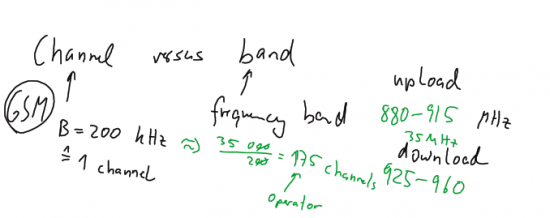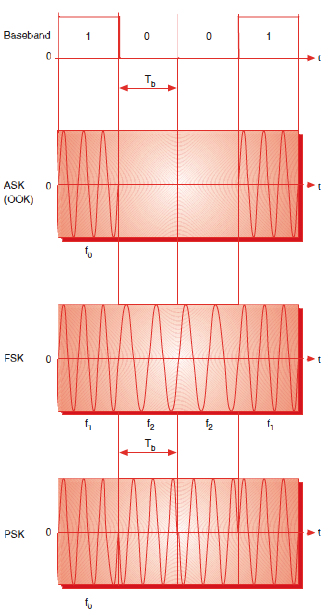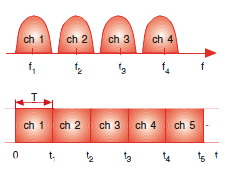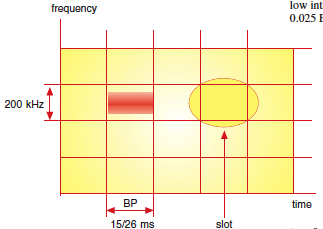A2-Radio Communication principles
From its-wiki.no
Revision as of 08:02, 21 September 2014 by Josef.Noll (Talk | contribs)
| Wiki for ITS | ||||||
|---|---|---|---|---|---|---|
|
Contents
⌘ Coding and Modulation
A modulated radio signal can be written in a general form:
Any of these three parameters can be varied: amplitude-, frequency- or phase-modulation.
- Channel-coding is used to reduce bit-error-rate, e.g. through forward error correction.
- Multiplexing is used to split the total amount of radio into smaller pieces. Typical: time, frequency or code multiplex. examples
[Source:K.E. Walter, Basics of Mobile Communications]
Comments
Figure: A frequency band consists of n channels.
Example GSM: the upload band is from 880-915 Unik/MHz, which is 35 Unik/MHz. With a carrier of 200 kHz we have 175 channels, which have to be divided between the various operators.
⌘ Modulation types
- Amplitude shift keying (ASK)
- Frequency shift keying (FSK)
- Phase shift keying (PSK)
[Source:K.E. Walter, Basics of Mobile Communications]
⌘ Frequency and time division multiplexing
- Time domain, e.g. 8 slots in GSM
- Frequency domain, e.g. up- and downlink in specific bands
- Code division (CDM), specific codes
[Source:K.E. Walter, Basics of Mobile Communications]
⌘ Code division multiple access
UMTS as an example (in one of the future lectures)



